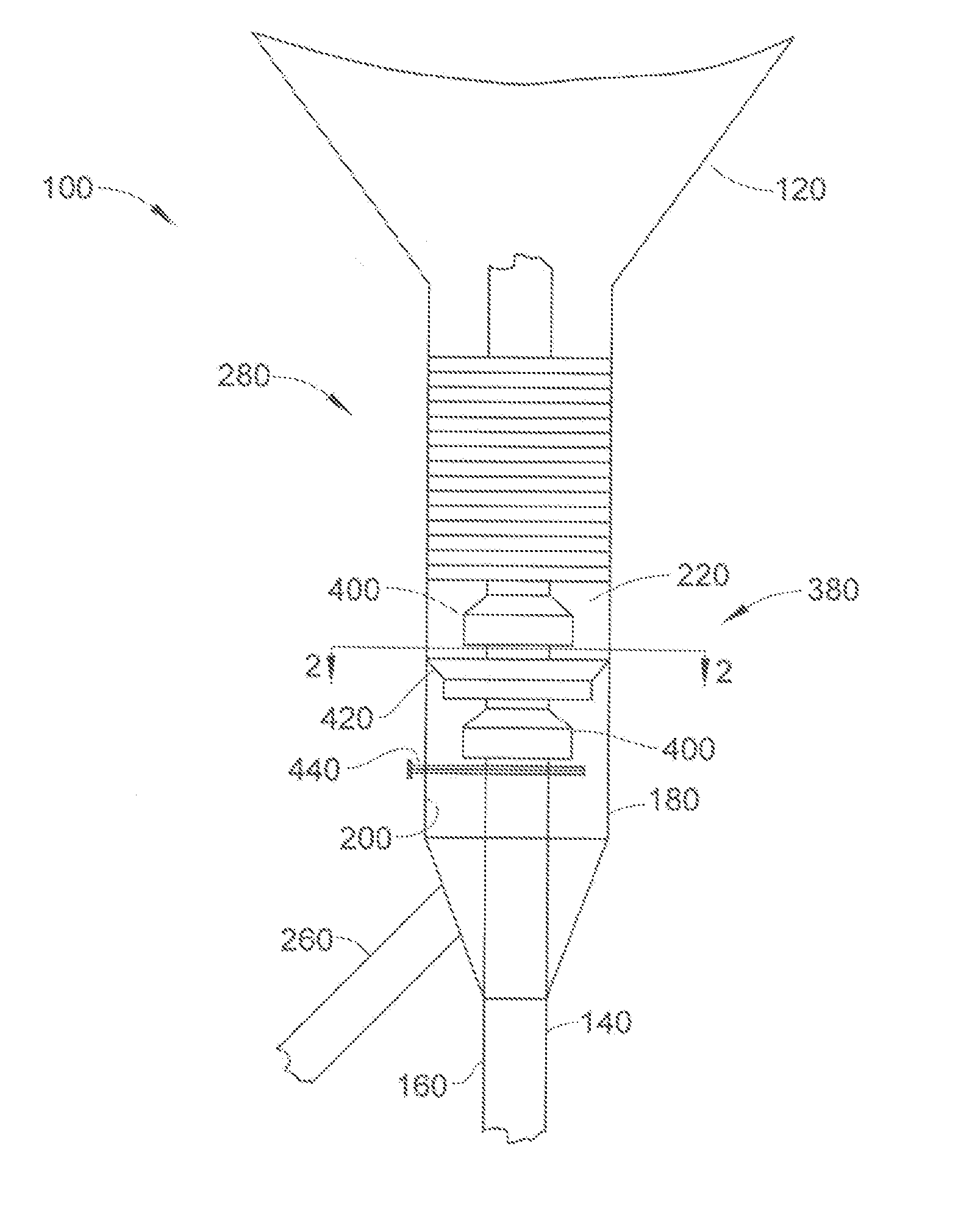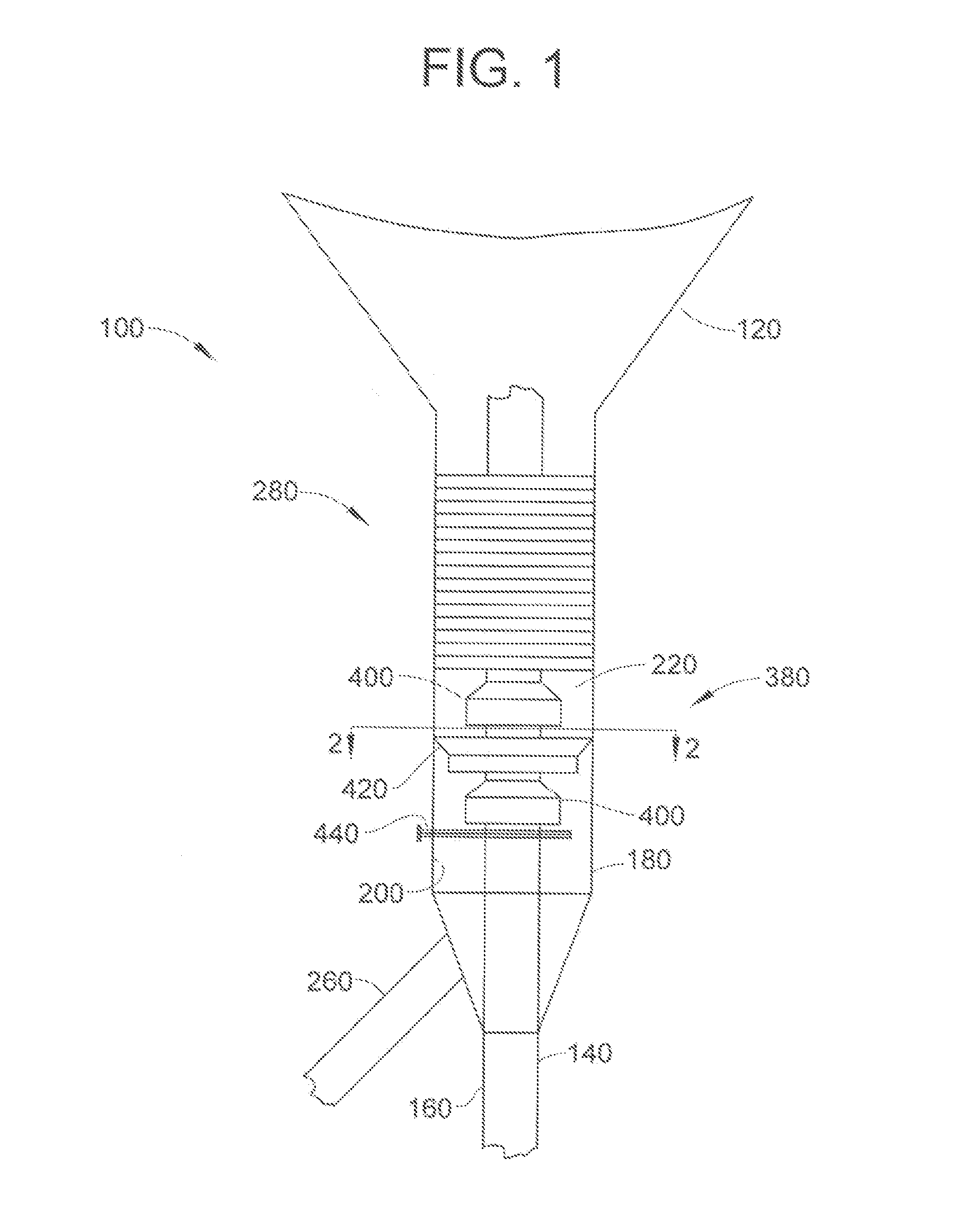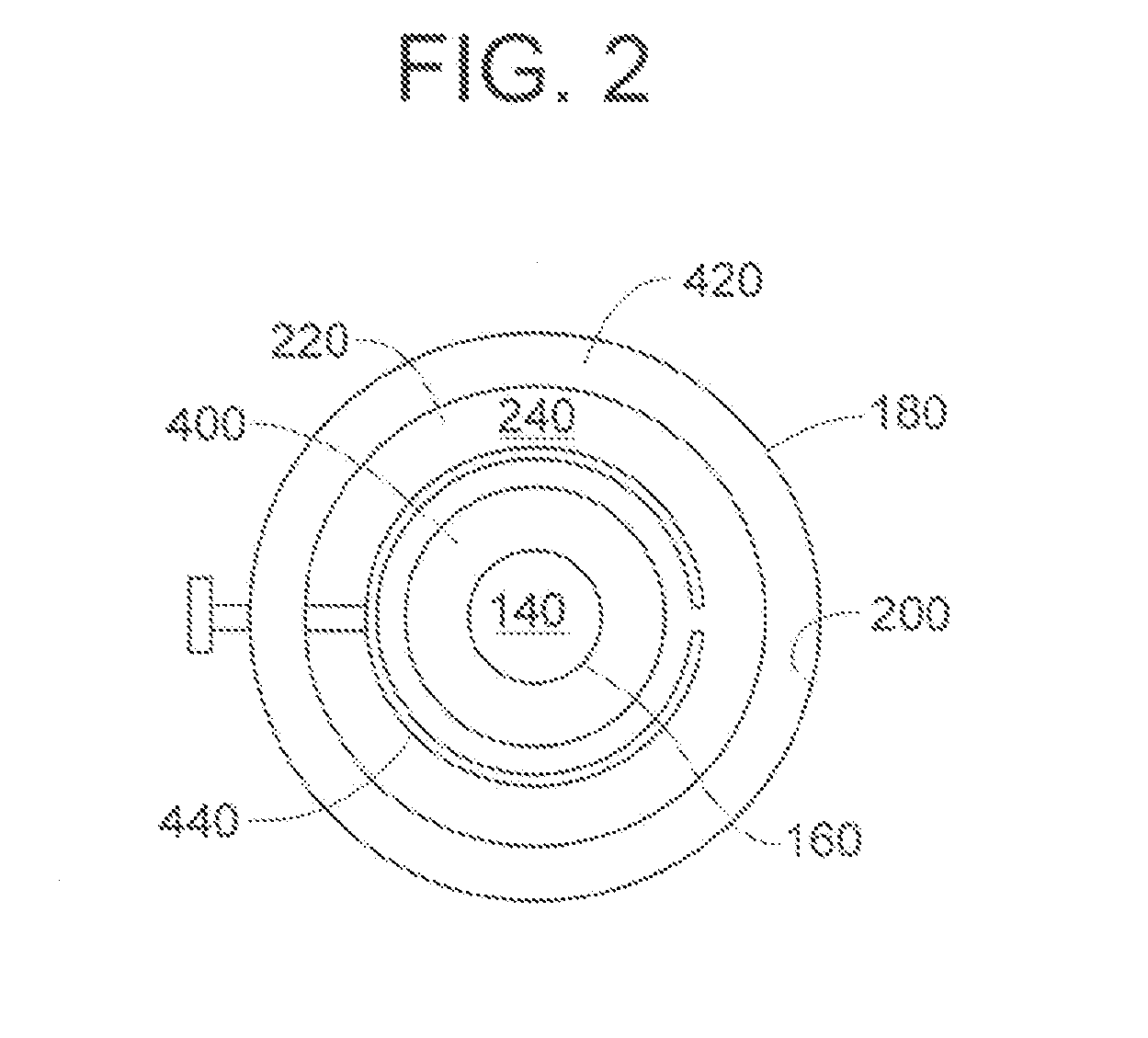Process for stripping and a fluid catalytic cracking apparatus relating thereto
a fluid catalytic cracking and stripping technology, applied in the field of stripping in, can solve problems such as flow patterns, and achieve the effect of improving the performance of the fluid catalytic cracking apparatus
- Summary
- Abstract
- Description
- Claims
- Application Information
AI Technical Summary
Benefits of technology
Problems solved by technology
Method used
Image
Examples
Embodiment Construction
[0016]An FCC apparatus may be used in an FCC process. Such an exemplary FCC apparatus and process are disclosed in, e.g., U.S. Ser. No. 13 / 492,025. The FCC apparatus can include a regenerator and a riser-reactor. The riser-reactor may include a reaction separation vessel, a stripping zone, and a riser. Generally, the feed can have a boiling point range of about 180-about 800° C. The feed can be at least one of a gas oil, a vacuum gas oil, an atmospheric gas oil, an atmospheric residue, and a vacuum residue. Alternatively, the feed may be at least one of a heavy cycle oil and a slurry oil. The feed may have a temperature of about 140-about 430° C., preferably about 200-about 290° C.
[0017]Referring to FIGS. 1-2, only a portion of the riser-reactor of an apparatus 100 is depicted, namely a riser 140, partially depicted, for providing the feed and catalyst to a reaction separation vessel 120, partially depicted, and a stripping vessel 180 at least partially or completely surrounding the...
PUM
| Property | Measurement | Unit |
|---|---|---|
| boiling point | aaaaa | aaaaa |
| temperature | aaaaa | aaaaa |
| temperature | aaaaa | aaaaa |
Abstract
Description
Claims
Application Information
 Login to View More
Login to View More - R&D
- Intellectual Property
- Life Sciences
- Materials
- Tech Scout
- Unparalleled Data Quality
- Higher Quality Content
- 60% Fewer Hallucinations
Browse by: Latest US Patents, China's latest patents, Technical Efficacy Thesaurus, Application Domain, Technology Topic, Popular Technical Reports.
© 2025 PatSnap. All rights reserved.Legal|Privacy policy|Modern Slavery Act Transparency Statement|Sitemap|About US| Contact US: help@patsnap.com



